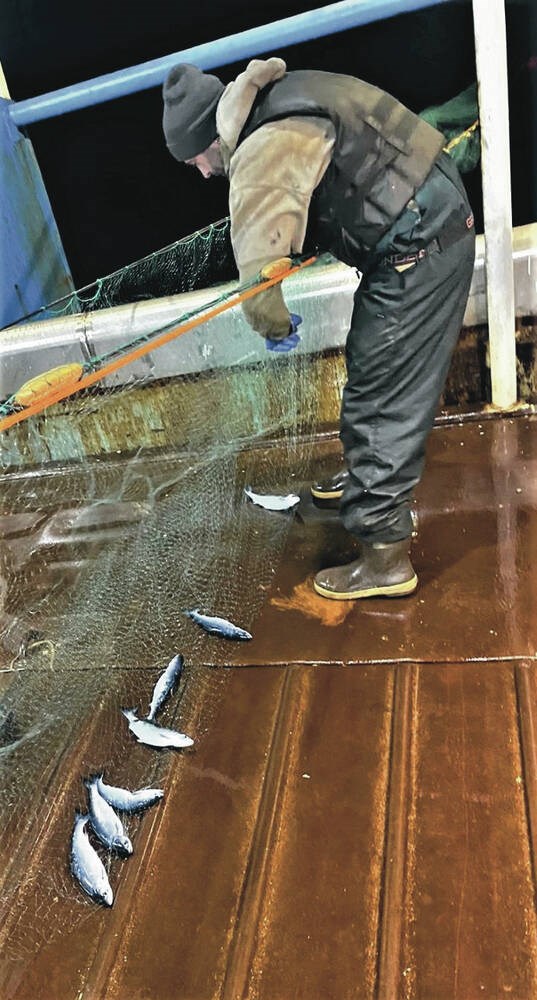Evidence that B.C. chum salmon form schools during their winters in the open ocean is intriguing scientists striving to piece together the puzzle of salmon survival.
A gillnet pulled nine young chum from the Gulf of Alaska a few days ago, adding evidence to a 2020 survey indicating that B.C. chum form schools in winter months.
Scientists are seeking new information as they prepare to examine results from this year’s international Pan-Pacific High Seas Expedition. They have been on the water for several weeks in the hopes of learning why salmon stocks, including chum, have been drastically declining in recent years.
The team of 60-plus scientists went to the Gulf of Alaska in February and March, looking at factors including prey species, water temperature, where the fish are from, where they travel to, and their condition.
The nine chum pulled in delivered “the very best evidence that schools of chum salmon exist,” scientist Richard Beamish said. The fish were caught in a gillnet, which hangs in the water in one location.
It has long been believed that once chum salmon left B.C.’s coast, they survived on their own.
Evidence of B.C. chum schooling is so new that its significance in terms of how it may regulate salmon abundance or survival is unknown, Beamish said. Further, not all chum salmon form schools.
Fish around the world form schools to minimize predation, Beamish said.
Being in a school may also help, in a way that is not immediately clear, to minimize the cost to their metabolism in the winter, he said. Salmon have to accumulate enough energy in spring and summer to get through the winter, when less food is available.
Forming a school would be a genetic requirement, something that is inbred and would have evolved over a period of time.
The researchers’ fishing vessel was chartered through a privately funded effort by Beamish and Brian Riddell, science adviser for the Pacific Salmon Foundation, who together raised about $1 million. The two worked together to raise funds for previous Gulf of Alaska expeditions in 2019 and 2020.
This year’s survey work by the international group builds on those expeditions.
A new paper called the Winter Ecology of B.C. Chum Salmon in the Gulf of Alaska, by Riddell, Beamish, Chrys Neville and Shigehiko Urawa, highlights a 2020 catch of 165 B.C. chum salmon, which appears to offer evidence chum can form large schools. DNA analysis found chum from B.C., Japan, Russia and the U.S. in one school.
“It may be found that the age composition and abundance of B.C. chum in the Gulf of Alaska is an index of returning adult abundance well in advance of potential fisheries,” the paper said.
Nanaimo research biologist Neville is the chief scientist on the fishing vessel Raw Spirit, which returns to Vancouver Island on Saturday. Jackie King, also of Nanaimo, is the chief Canadian scientist for the expedition and is on the Canadian Coast Guard’s Sir John Franklin, returning to Victoria on Friday.
This year’s expedition is backed by governments, academia, the North Pacific Anadromous Fish Commission and the International Year of the Salmon organization.



